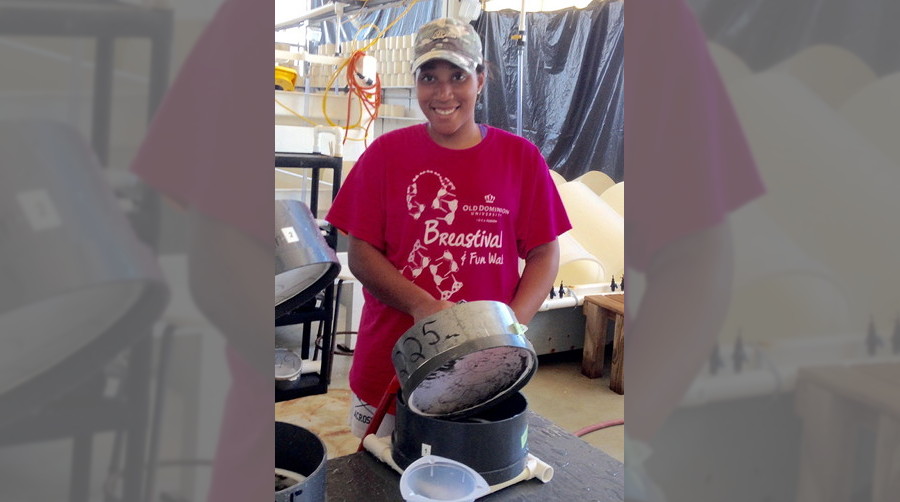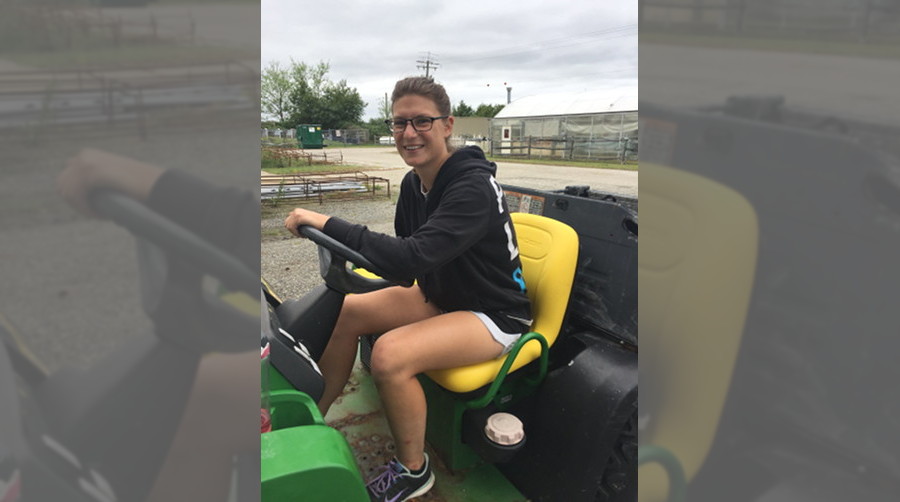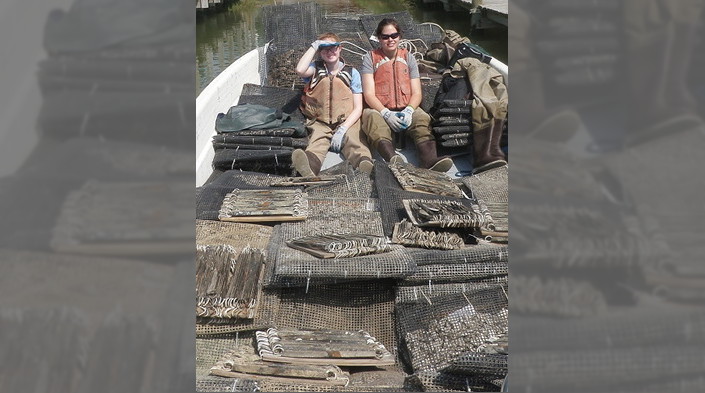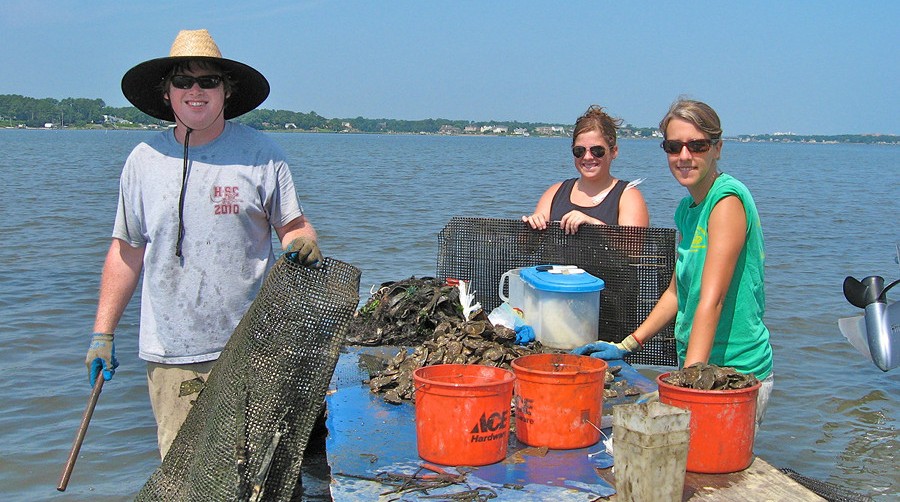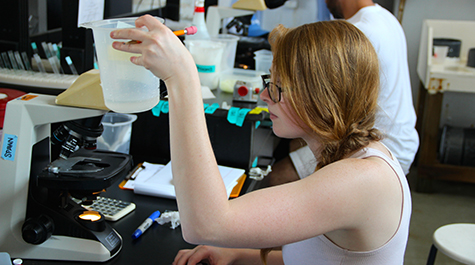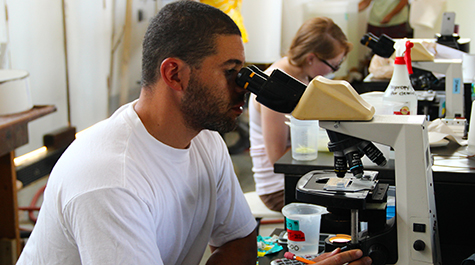Oyster Aquaculture Training
What is the OAT program?
The Oyster Aquaculture Training (OAT) program is a 5-month paid internship hosted by the Virginia Institute of Marine Science (VIMS) in Gloucester Point, Virginia. The program runs annually from March through July.
Participants gain hands-on experience by working with experts from the Aquaculture Genetics & Breeding Technology Center (ABC), where they learn key skills in oyster aquaculture.
What can I expect to learn?
Learn hands-on aquaculture skills in:
Broodstock
- Conditioning process
- Broodstock tank maintenance
Spawning
- Differentiate males, females & hermaphrodites
- Rate gonad ripeness
- Learn different spawning techniques
Larval husbandry
- Measure water quality
- Clean larval tanks
- Count larvae
- Assess larval health
Microalgae production
- Grow and maintain different algae species
- Learn physical and biochemical attributes of different algal species
- Calculate feeding requirements for larvae, setters & adults
Nursery operations
- Learn how an upweller works and how to maintain and upweller
- Learn care of seed, grading, counting and stocking for field deployment
Farm Management
- Learn about each farm site attributes
- Work with multiple kinds of gear (adjustable long line, bottom cages, rack and bag, custom gear)
- Learn how to stock and manage seed, juveniles and adults
- Learn how to recognize and manage biofouling
- Learn how to build gear
Laboratory
- Learn how to fix and process samples for ploidy analysis
- Learn how to dissect oysters and different disease diagnostic techniques
In addition to core training, participants engage in customized externships at research institutions, state agencies, or private companies — matched to support their individual career goals.
The program also features lectures and guest speakers covering a range of topics such as oyster biology, selective breeding, and aquaculture business management.
Who is this training for?
The OAT program welcomes anyone looking to enter the shellfish aquaculture field - no prior experience required.
Is housing provided?
Housing is not provided as part of this program as we do not have on-campus housing available. We will, however, do our best to assist with finding housing in the local community.
Where do OATS end up?
Over the last 15 years, OAT alumni have leveraged their internship experiences into jobs at hatcheries, commercial shellfish farms, research institutions, and state agencies along the East Coast.
To date, OAT employers have included:
Virginia
- Cherrystone Aqua-Farms
- Mobjack Bay Lease Holdings
- Oyster Seed Holdings
- Rappahannock Oyster Company
- Shores & Ruark Seafood
- Virginia Institute of Marine Science
- Virginia Marine Resources Commission
- JC Walker Brothers
- White Stone Oyster Company
Maryland
- Morgan State University/PEARL
- University of Maryland
North Carolina
- Oysters Carolina
- University of North Carolina, Wilmington
Massachusetts
- Aquaculture Research Corporation
Maine
- BlueTrace
- Mook Sea Farm
- Running Tide
How do I apply?
Prospective OAT interns must complete an online application at www.wm.edu/offices/uhr/careers. Positions are typically posted in December/January and close in February/March.
Please be sure your application is accompanied by a cover letter that clearly states your interest in aquaculture training.
If you have further questions, please email Amanda Chesler-Poole at achesler@vims.edu



